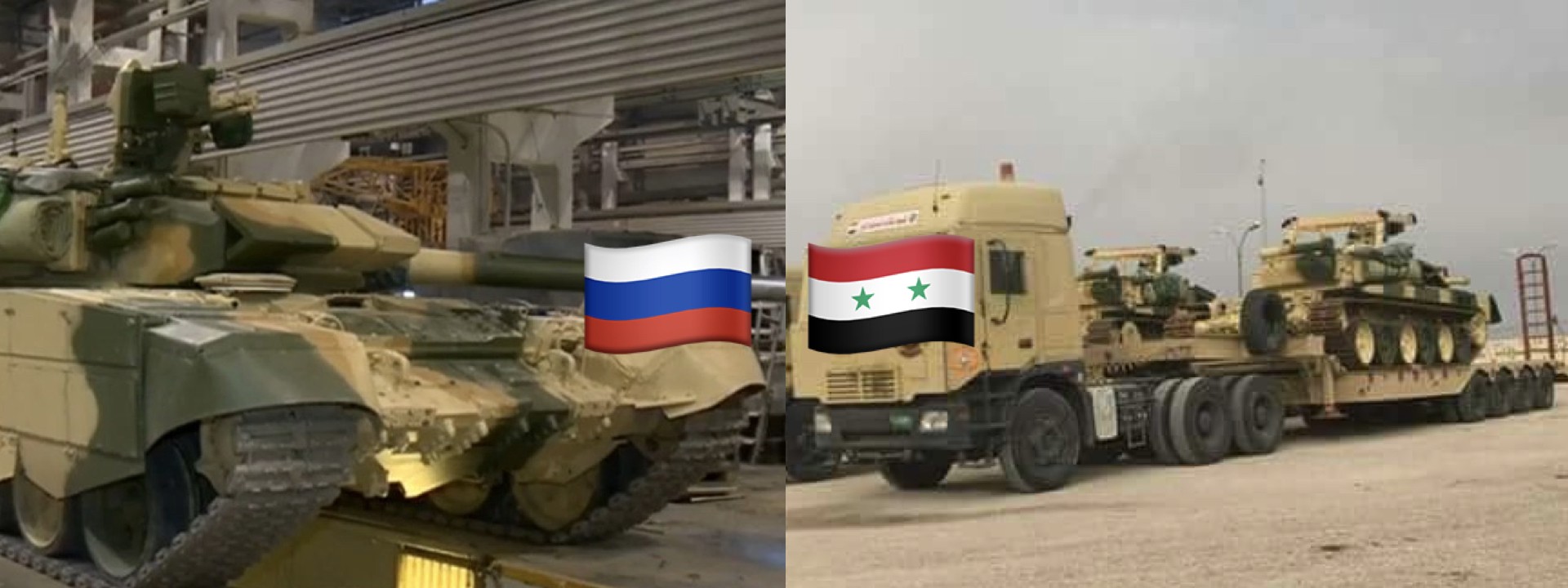#PutinAtWar: New Tanks and Tough Love in Iraq
Is Iraq’s new tank supplier in Russia the result of conditions for further supplies from the United States?
#PutinAtWar: New Tanks and Tough Love in Iraq

Is Iraq’s new tank supplier in Russia the result of conditions for further supplies from the United States?

Dozens of Iraqi military vehicles were destroyed or lost with some controversy during the fight against ISIS as early as 2014. Today, Iraq is rebuilding its inventory of armored vehicles and are looking to different sources to replenish its force. The Iraqi army announced that they received the first batch of Russian T-90S main battle tanks (MBT) this week.
@DFRLab took a closer look at open source data to confirm these claims.
New Tanks
On February 19, TASS reported that Iraq’s Defense Ministry received its first batch of 36 T-90S tanks under an arms contract with Russia. The delivery came as part of a purchase agreement signed last year between Iraq and Russia for a total of 73 T-90s. According to Iraqi Army Chief of Staff General Othman al-Ghanimi, the rest of the tanks will be delivered in April to form a full armored brigade.
The T-90S model is an updated, export-oriented version of the T-90 tank and produced in Uralvagonzavod tank factory in Nizhny Tagil, Russia. A video appeared on February 11, allegedly showing the T-90S tanks being assembled for Iraqi military.
https://www.youtube.com/watch?v=AWoykHGlwm4
Another video appeared as early as February 4, showing the tanks being loaded to a cargo ship.

The video did not provide a significant amount of detail, nonetheless the T-90S model was clearly visible. A number of independent open source analysts suggested that the ship onto which it was loaded on was most likely the RoRo Ocean Energy cargo ship, flying Liberian flag. According to the Vessel Finder, the ship left the Iraqi port of Umm Qasr and was located close to the straits of Hormuz on February 19. The port data corroborated the open source analysts, as this ship was likely the tank delivery vessel.

A few pictures of the T-90S trucks were captured by Iraqi civilians and surfaced on the internet as early as February 15. The photos were not posted before and appeared to be genuine. Data for geolocation within each image was scarce, but the likely location of these pictures was on Highway №1, north of Umm Qasr port.

Two flatbed trucks with two T-90S tanks were captured in photo that surfaced online. On one of the flatbed trucks, Arabic text with a Iraqi flag is clear. Each observations suggest that the Russian T-90S tanks actually reached the shores of Iraq and were delivered to Iraqi military.

An undisclosed Iraqi Defense Ministry source claimed that the tanks were on the way to Baghdad, via the city of Basra. The first batch of tanks was expected to enter service in the coming days. The Iraqi Army plans to operate both the American Abrams tank and the new Russian T-90S tanks in separate armoured divisions.
Lost Tanks
The decision to turn to Russia was considered most likely after intense situation with United States as a strategic partner and supplier.
Iraq bought 140 refurbished M1A1Ms from the United States starting in 2008.
When ISIS surged in northwest Iraq in 2014, the militants managed to destroy five, damage dozens, and capture several intact Abrams tanks. Since then, these tanks have changed hands but were not recovered the Iraqi government. As ISIS lost territory in Iraq, pro-Iranian Shiite militias got their hands on at least nine high-tech, U.S.-made M1 Abrams MBTs, as early as 2015. The U.S. Department of State undertook efforts to recover the tanks, but the militias have already deployed them against some of America’s Kurdish allies.
Pictures of M1A1M Abrams tanks flying Iran-backed militia flags were surfaced on the internet as early as 2015. For instance, Hezbollah Brigades (Kata’ib Hezbollah) and Kata’ib Sayyid al-Shuhada flags are on the Abrams tanks in the photos below.

More pictures of captured M1A1M Abrams tanks appeared last year. One of the tanks had the flag of Asaib Ahl al-Haq — another Shiite militia backed by Iran.

On October 20, 2017, Kurdish Peshmerga claimed to have destroyed one of the M1A1M Abrams tanks that were used against them by Iran-backed Shiite militia in Kirkuk province. A number of photos and videos confirmed the claim.
https://www.youtube.com/watch?v=-6HFwGLwLTc
Due to lack of official statements or open source evidence, the current state of the misplaced tanks remains unclear.
Some sources claim that the tanks were already recovered or at least the location was known due to their use by Shiite militias after the fall of ISIS in Iraq. Another worrisome aspect of the misplaced U.S. tanks is the possibility for Iran to acquire technology in the tanks held by Shiite militias and use it for their own tank development.
However, one residual effect of the event is Iraq’s potential motive to turn to Russia for other tanks because some believe the United States is effectively sanctioning the Iraqi army by not delivering spare parts of M1A1M Abrams.
Conclusion
One fact is clear: the Iraqi military received the first batch of Russian T-90S tanks on February 2018 and more will arrive. Currently, Iraqi army is planning to form two separate brigades of Abrams and T-90S tanks. The decision to buy the Russian tanks was signed in 2017, but was most likely influenced by the tense situation with U.S., which demanded the lost Abrams tanks be recovered.
This case was yet another good example of how high-tech military equipment can easily fall into the hands of the lower-tech opponent. However, the implications certainly made an already complicated political and security situation even more complicated.
Follow along for more in-depth analysis from our #DigitalSherlocks.

